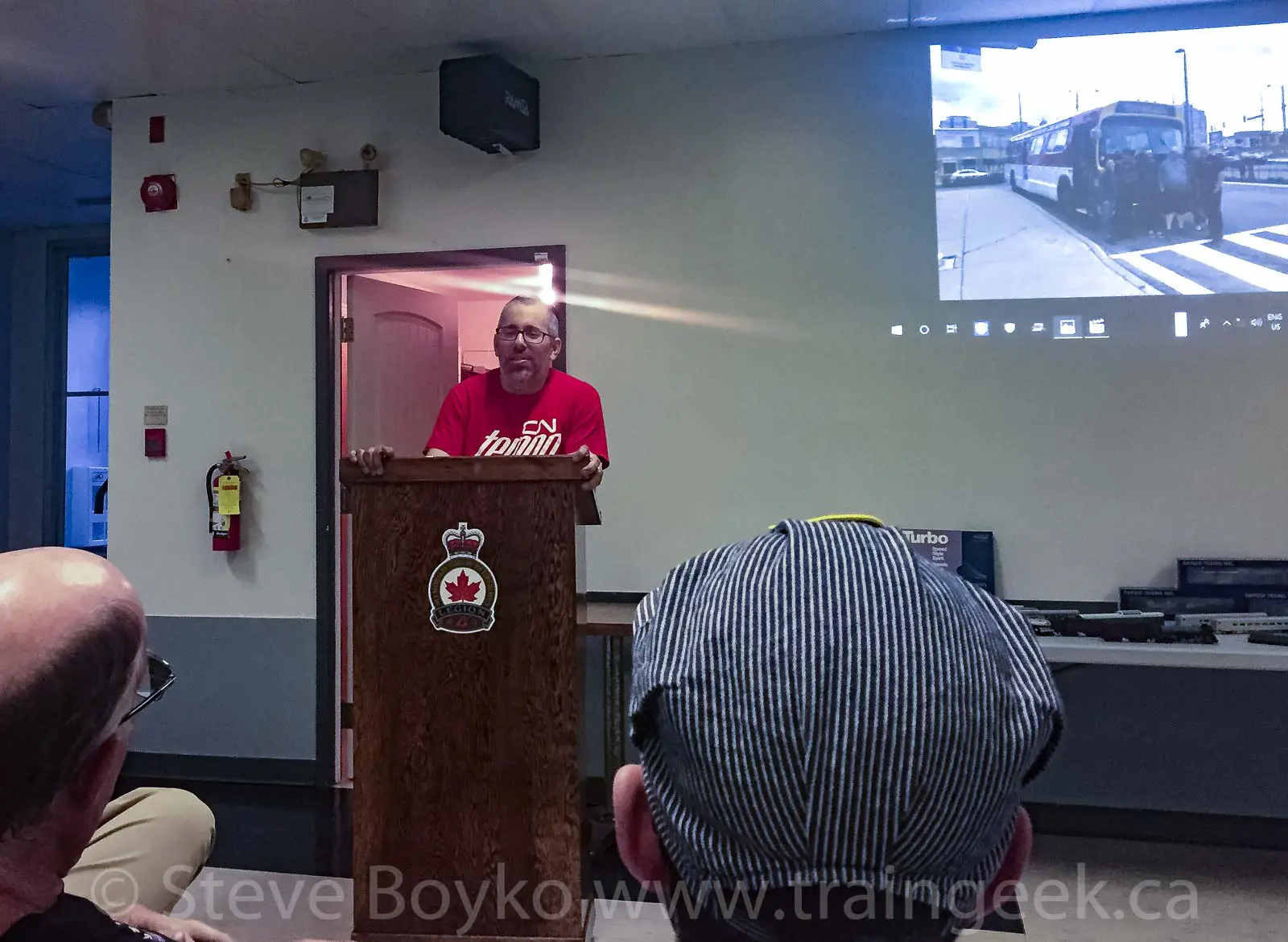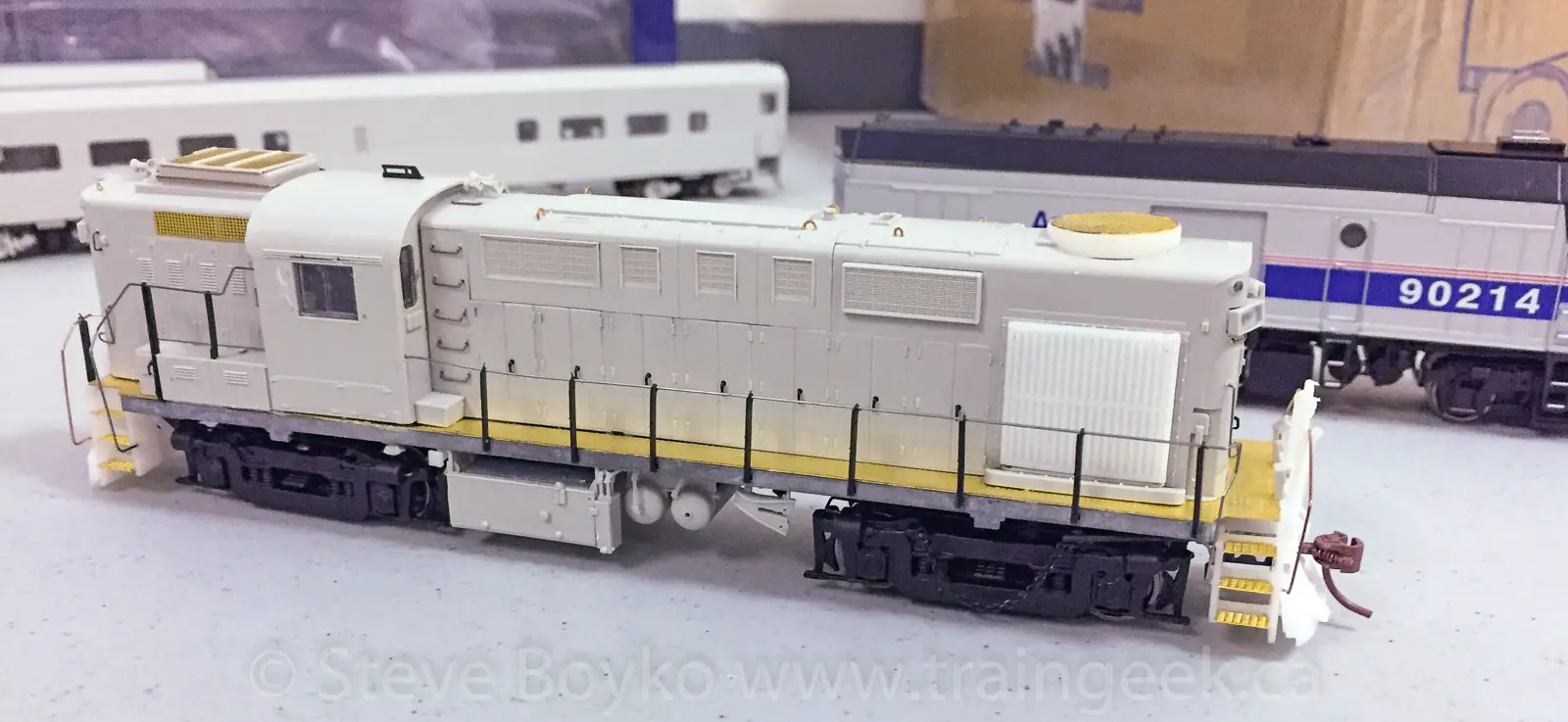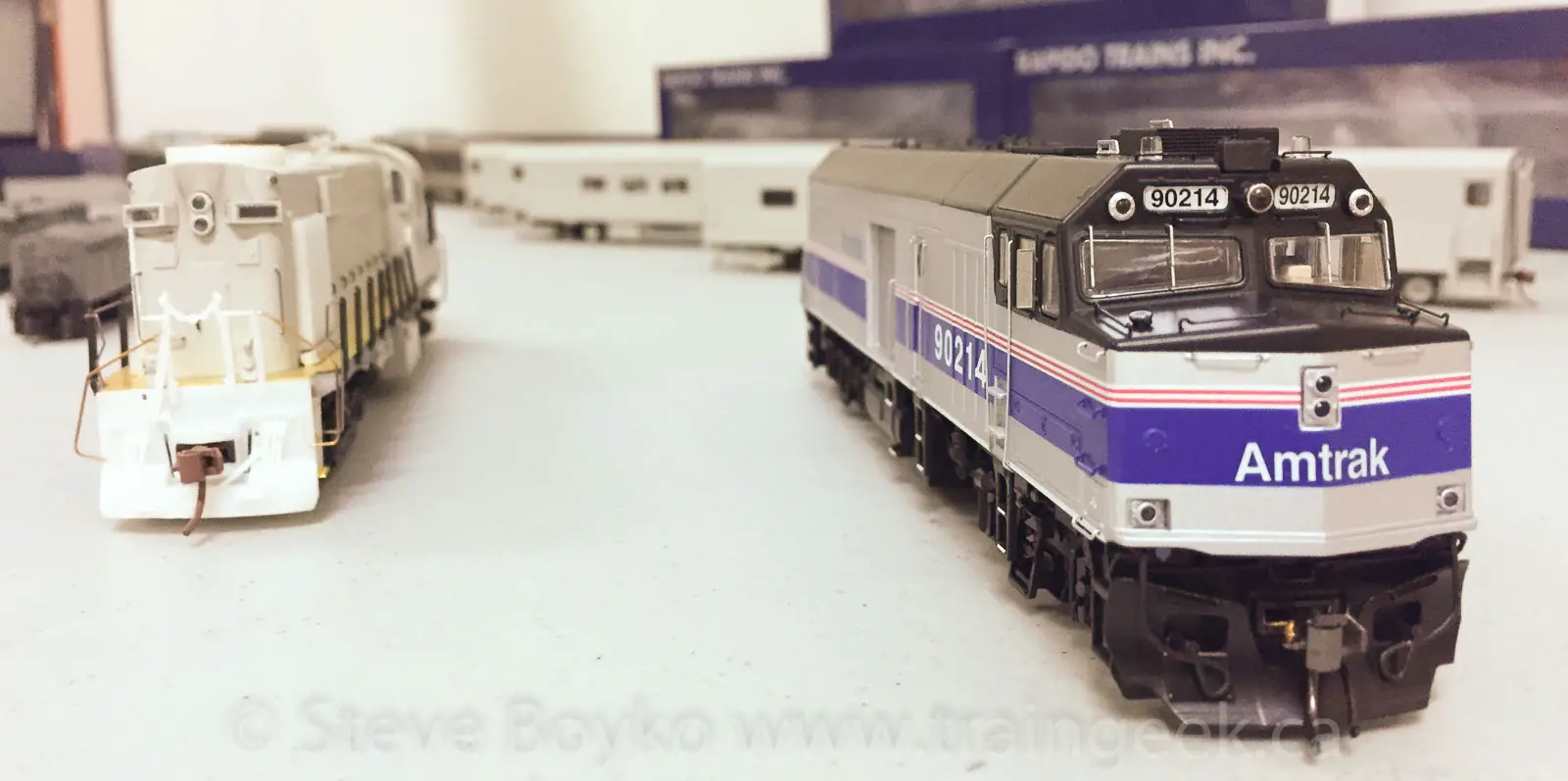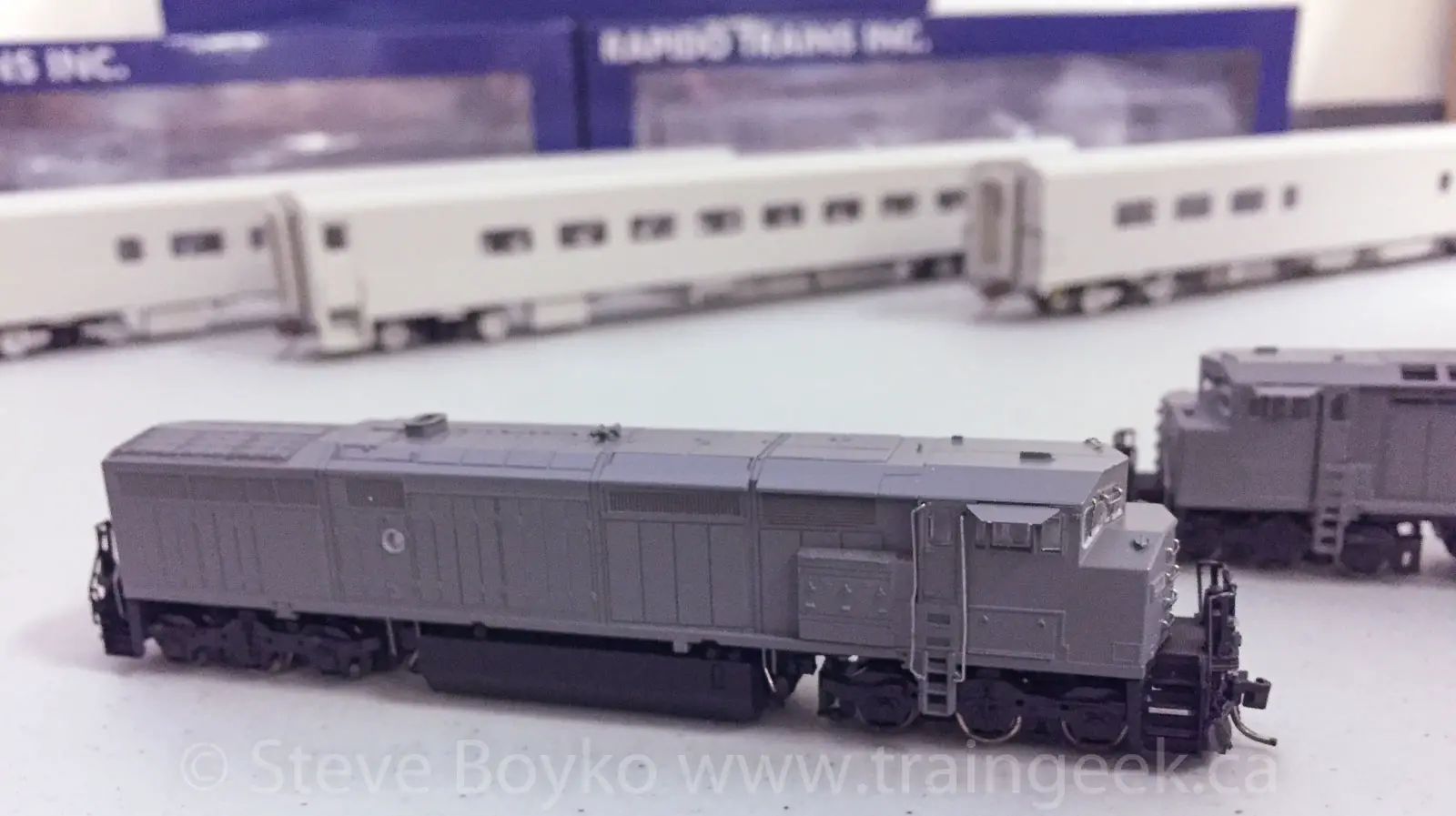
Jason Shron, president of Rapido Trains, gave a talk in Winnipeg on August 16 on running a model railroad company. Jason has been in Winnipeg a number of times, sometimes meeting up with people at Ware House Hobbies, but it always seemed that I was out of town when he was here, or I heard about it afterward. This time, there was plenty of advance notice and I was able to attend.
Jason was giving the talk to the Winnipeg Model Railroad Club – and anyone else who wanted to attend – and wanted to talk about how Rapido manufactures trains, from start to finish, at their two factories in China. The story was especially topical, given that a major Chinese model train factory closed a week before his talk (Rapido’s production is unaffected).

He started with a history of model railroad production in China. Basically, modern model train manufacturing was built in China. Sanda Kan was the first factory and made trains for many manufacturers until it was purchased by the company that also owns Bachmann. The Life-Like Proto 2000 series was the first major line of model trains made in China, back in the late 1980s. Today, most ready-to-run model railroad locomotives and freight cars are made in China.

One thing people always say is, “make it in America!” But the economics aren’t there.
Jason talked about the Budd mid-train dome car and its economics. I don’t want to get into specific numbers, as I am not sure he wants those made public, but here is an overview. The car has a suggested retail price (MSRP) of $109 Canadian on Rapido’s web site ($98.95 on Canadian Express Line).
The first cost is the cost of tooling to make the molding to make the shell. Jason quoted a number, which I won’t repeat, but it’s in the tens of thousands of dollars. That’s a one-time price you have to invest before you make a single car, and you have to recoup that over all the cars you sell. This makes it very expensive to produce a small run of cars.
Each dome car has about 8 hours of labour in it, to do the pad printing of all the lettering, and add all of the detail parts. I think Jason said there are about 300 detail parts on each car. If you assume that this was done in North America, where the worker was paid about $20/hour (not including labour overhead such as employment insurance, Canada Pension, etc.), that’s $160 in labour alone. Add onto that the material cost and overhead to pay the 12 people who work full-time at Rapido, advertising, etc. and you’ll probably end up with a $400-$500 car. It’s simple math.

Jason talked briefly about 3D printing, which is great for short runs, but it’s expensive and slow and not (yet) suited for mass production. Maybe someday this will change. That would only reduce the tooling costs, though.
He also mentioned that production costs in China have more than tripled since 2008, due to the rising cost of labour there. Someday it will not be cost-effective to make model trains there either!
After Jason’s presentation, he opened the floor to questions and answers, and there were a lot of them. I’ll mention a few. Jason was very open and honest and I appreciate that.
Q: Couldn’t someone buy the closed factory?
A: No, China really discourages foreign ownership. Also, Chinese owners know people – relationships go a long way toward working with local officials and getting things done.

Q: Can’t you make cheaper, lower-fidelity models?
A: Yes, Rapido tried that with the “Prime Movers” line with the Dash-8. People demanded more detail, and the profit margin is smaller on those so they have to sell a lot more. In the end, people want high detail.
Scale Trains makes three versions of most models – Museum Quality, Rivet Counter, and Operator, and their experience, according to Jason, is that the vast majority of sales are the Museum Quality versions and they end up with a surplus of the lower quality versions.
Q: How are your sales split by the nationality of the model?
A: About 30% British models, 50% Canadian, and 20% American.
I was very glad to finally meet Jason in person. We have corresponded a few times over the years, and he sent me a passenger car once as thanks for providing some reference photos and other information for a project they had. Jason is a great guy in person, and a tremendous asset to the hobby. He is also a great advocate for, and user of, VIA Rail.
Thanks for giving this talk, Jason, and I hope to see you again soon!